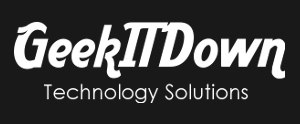Lately we’ve noticed a spike in problems stemming from the download or installation of free products. While we at GeekITDown wholeheartedly support open source products, as well as quality, free software created and maintained by generous individuals or corporations, we must urge a word of caution.
I’ve Got Nothing to Lose, it’s Free!
The allure of free software is very strong these days as users need to save money and require instant remedies for their computing issues. The thought process for users seems to be – if it’s free, then I have nothing to lose. That couldn’t be further from the truth. Many of the so-called ‘free’ alternatives are actually badware programs or ‘trial period’ software.
Badware is a Wolf in Sheep’s Clothing
Badware programs essentially install malware and are designed to corrupt and damage a computer system while simultaneously convincing the user to purchase a fix for the problems. Unfortunately, there isn’t much recourse for users who succumb to badware. Users are unaware that the software is useless and possibly infecting their own computer system by using it. Although frustrating, it is a very common occurrence and users have very little warning beforehand. The makers of such badware are able to advertise and promote their product just like any other legitimate software maker and more often than not are better at it. They tend to portray a feeling of emergency or ease of use to lure users into downloading the product. It works and their isn’t a whole lot than can be done to combat it.
Stop Nagging Me!
The ‘trial-period’ software that users evaluate is, in many cases, not as risky but can still lead to future problems or a decrease in system performance. We recommend if the software in question is limited to trial-period only, that clients do more research or contact us before committing. Most times a more suitable alternative is available that fits our clients’ needs. The real problem with trial software is just that, its a trial version, which means at the end of the trial it will stop working and inevitably nag users endlessly with popups and reminders until they ultimately purchase the software. Generally speaking, users don’t want to be nagged, they don’t want to be told what to buy or when to buy it and they definitely don’t want a software product to suddenly stop working. Trial software can be useful if you honestly just want to test before buying, just make sure you know everything that’s being installed and how to remove it afterwards.
Is it Junk or Treasure?
So how can users spot the badware and wade through the junk to find something legitimate? There are a number of things. The best thing to do is call your “Computer Specialist”, we will assume you all have one (if not contact usto ascertain the information you need). They have the knowledge you need and can quickly offer solid advice on particular products and it is the simplest approach. Another option is to ask someone you know, friend or family member. Odds are the software you’re interested in relates to an activity you would like to engage in with those people, so they may have some insight . One of the most difficult ways to determine if junk is junk is to very carefully read about what is being advertised. The word “free” itself should set off warning alarms. That doesn’t mean that free is always bad but if its free with the promise of solving a problem, then it likely has other motives. For instance, if free is the main point of attention for a product and there is a claim to somehow improve your computing or resolve system issues then you should be cautious. Whereas, if you pay for a service and are then offered something free or provided free software that is by nature providing an alternative rather than a solution then those options are likely to be valid and worth inquiring about.
Ask a Professional
If you need a service which resolves problems, call a professional and save yourself from potential identity theft or financial loss. Admittedly, we are a bit one-sided in that thinking but experience supports that statement. Users inevitably believe they can solve their system issues themselves by finding a ‘magic bullet’ type free solution. If that were really the case, tech professionals would be out of work and there wouldn’t be words like cyber-warfare or hacking being thrown around when sensitive bank or government data is compromised. If you dislike the idea of paying someone for something that wasn’t your fault, you’re not alone. You, as the user, have done nothing to deserve an infection or malicious scheme. However, take the time to call around and talk with professionals. Listen to what they have to say and of course check prices. If you don’t like the price, say so and maybe they can offer a discount of some sort. Either way its better than dealing with identity stealing spyware and system corrupting viruses on your own.
Conclusion
Finally, remember that just because it’s free doesn’t mean you should try it. Know what you need and do some research before sampling something. Absolutely do not download every free piece of software you run across. As an example, there are literally dozens of browsers (Internet Explorer, Firefox, Safari, etc.) available to users. Only website developers should use multiple browsers for testing purposes. The average user should not be using several browsers on a regular basis. Find one you like and stick with it. Although browsers are generally safe to install, there is absolutely no need for an average user to have 5, 6 or more browsers installed on their system. It’s unnecessary and overkill and a prime example of the ‘free bug’ hitting the end user.


